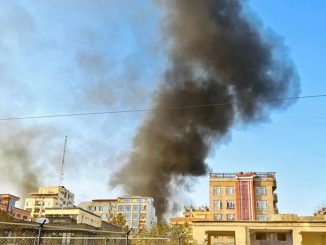
| Published July 28, 2025
Artillery fire erupts along the disputed frontier as each side blames the other for the escalation amid US call for truce.
A decades-old border rivalry between Thailand and Cambodia has exploded into the deadliest armed conflict in the region since the early 2010s, leaving dozens dead and hundreds of thousands displaced. Despite calls for calm—including a high-profile ceasefire push by former U.S. President Donald Trump—the fighting continues to escalate, with both nations trading artillery and airstrikes over disputed territory. As civilians flee and historic temple zones are reduced to rubble, regional powers are scrambling to prevent a full-scale war. In a last-ditch effort to halt the bloodshed, the two Southeast Asian neighbors are set to meet for urgent peace talks in Kuala Lumpur under the mediation of ASEAN and Malaysia. But with fresh shelling reported even as diplomacy unfolds, the road to de-escalation remains treacherous.
🔥 Key Developments
1. Escalation on the Ground
Since July 24, heavy artillery, rocket strikes, and—by July 25—airstrikes using F‑16s and cluster munitions have been exchanged. Both countries accuse each other of shelling civilian homes and historic temple sites. The fighting is the worst the region has seen in over a decade.
2. Rising Toll & Humanitarian Crisis
As of July 27, at least 33–35 people have died (including many civilians), and over 200,000 have been displaced from border communities in both nations. Among the victims was Rungrat Prachan and her two children, killed while grabbing snacks at a petrol station in Sisaket province.
Villagers report ghost‑town conditions, destroyed crops, and disrupted livelihoods, and many fear the conflict’s long-term impact.
3. Diplomatic Pressure & U.S. Intervention
Former U.S. President Donald Trump, from his golf course in Scotland, claimed to have spoken with both leaders and urged a ceasefire—warning of up to 36% tariffs if fighting continues. Cambodia reportedly agreed “unconditionally,” while Thailand said it would proceed only if Cambodia’s intentions were genuine . U.S. Senator Marco Rubio also offered U.S.-facilitated talks.
4. ASEAN-Mediated Peace Talks
In response, Malaysia, as current ASEAN chair, stepped in to host mediation in Kuala Lumpur. On July 27, both countries confirmed their leaders would meet there on July 28 at 15:00 local time (07:00 GMT), represented by Acting Thai PM Phumtham Wechayachai and Cambodian PM Hun Manet . Both foreign ministers reportedly agreed no other countries should be involved beyond ASEAN mediation.
However, fresh artillery strikes continued even as diplomatic plans progressed, casting doubt over the prospects of an immediate cessation of violence
🧭 Bigger Picture
Historical Context
This is the most serious border confrontation since the Preah Vihear temple clashes of 2008–2011, rooted in long-standing territorial disputes and nationalist sentiment between Thailand and Cambodia
Political Overtones
Underlying the escalation is a fraught political rivalry: allegations involving Cambodia’s former strongman Hun Sen and Thailand’s political faction tied to the Shinawatra family—including Prime Minister Paetongtarn—have fueled nationalist rhetoric and public distrust
Civilian Horror Stories
The human toll has become personal. Families displaced, homes destroyed, and tragic losses like Rungrat and her children highlight the brutal reality of war. One bereaved husband simply said:
“My wife is like the other half of my life.”
 Implications:
Implications:
The renewed conflict between Thailand and Cambodia carries wide-reaching implications—militarily, politically, and economically—not just for the two nations but for the broader Southeast Asian region.
1. Regional Instability and ASEAN’s Credibility at Stake
The clash threatens to undermine ASEAN’s long-held principle of regional unity and peaceful dispute resolution. If the Malaysia-hosted peace talks fail, it could expose ASEAN’s limitations in managing internal crises, particularly when nationalist sentiment overrides diplomatic norms.
2. Civilian Suffering and Humanitarian Strain
With over 200,000 displaced and civilian casualties rising, the humanitarian cost is rapidly growing. Cross-border aid logistics are under pressure, and displaced families are sheltering in makeshift camps with inadequate resources. A prolonged conflict could trigger a refugee spillover into Laos, Vietnam, and southern Thailand.
3. Economic Fallout and Trade Disruptions
The border region is home to shared trade zones, tourism corridors, and agricultural exchanges. Ongoing hostilities could freeze cross-border commerce, disrupt supply chains, and further weaken economies already hit by inflation and post-pandemic recovery struggles.
4. Risk of Escalation and Foreign Involvement
The use of airstrikes, heavy artillery, and cluster munitions marks a dangerous escalation. If unchecked, the conflict could draw in foreign actors—either through arms support, mediation, or economic pressure. Trump’s tariff threats and Senator Rubio’s mediation offer hint at a growing U.S. interest, while China’s silence raises concerns about its own stake in the region.
5. Political Fallout for Both Governments
Domestically, both Cambodian Prime Minister Hun Manet and Thailand’s Paetongtarn Shinawatra face growing scrutiny. Hardliners in both countries may exploit the conflict to rally nationalist support or deflect from internal political struggles. Any perceived compromise could be weaponized by opposition forces.
 Overall Takeaway:
Overall Takeaway:
As Thailand and Cambodia prepare to sit down for peace talks in Kuala Lumpur, the world watches with cautious optimism—and growing concern. Despite diplomatic gestures and mounting international pressure, including from the United States, the continued exchange of artillery and airstrikes suggests that trust remains fragile, and the road to resolution is perilous.
For now, the border remains a flashpoint—scarred by tragedy, clouded by politics, and soaked in the grief of ordinary families caught in the crossfire. Whether the upcoming talks can silence the guns and rebuild dialogue will determine not only the future of Thai-Cambodian relations but the credibility of ASEAN and the stability of Southeast Asia at large. The next 48 hours may shape the region’s trajectory for years to come.
SOURCES: REUTERS – Thailand and Cambodia to hold talks on deadly border conflict in Malaysia
AL JAZEERA – Thailand and Cambodia to hold ceasefire talks in Malaysia
AP NEWS – Thai and Cambodian leaders to meet in Malaysia for talks to end deadly border dispute





Be the first to comment